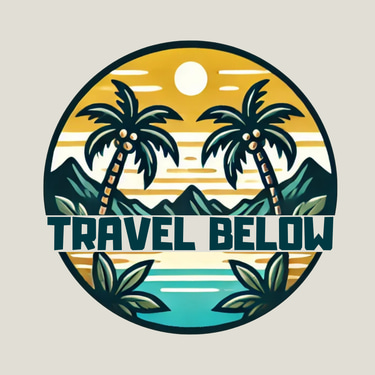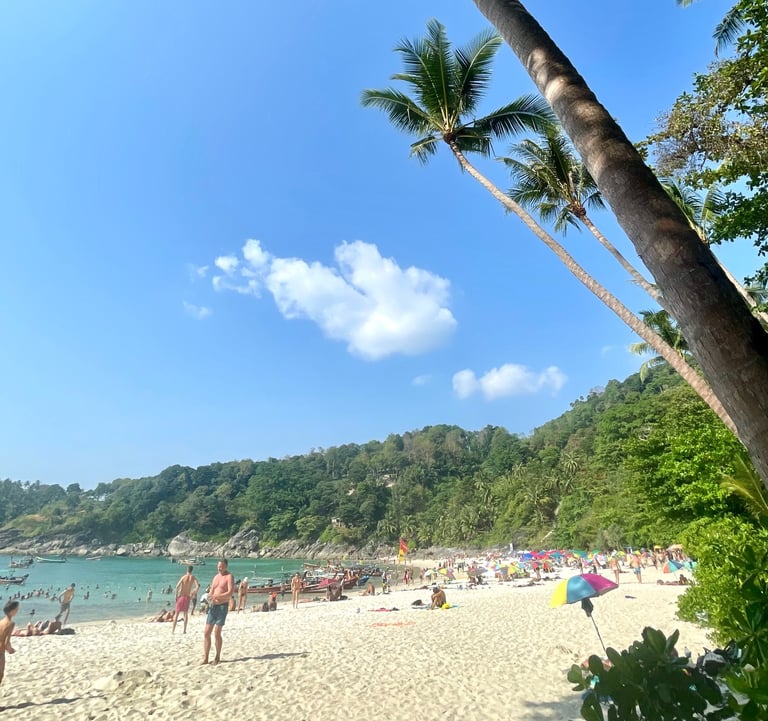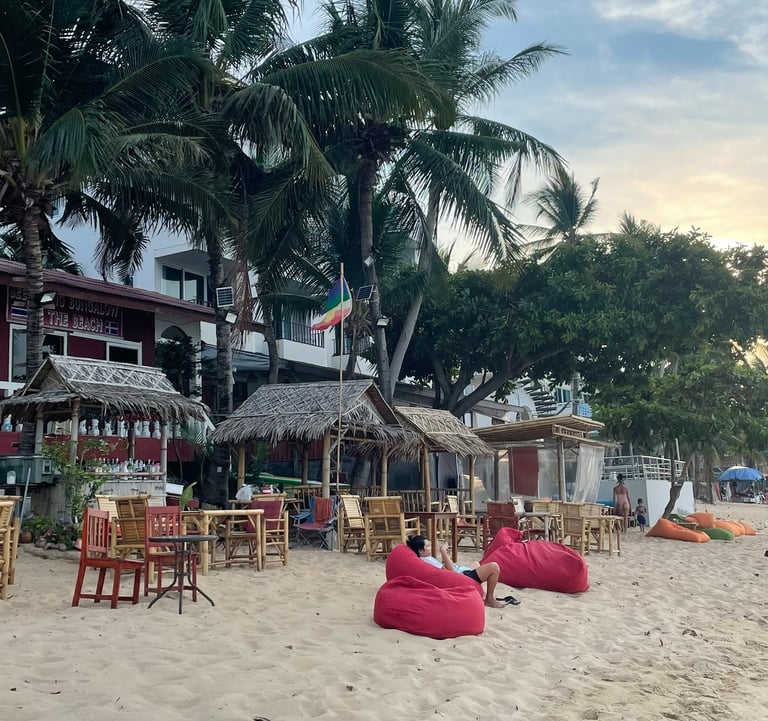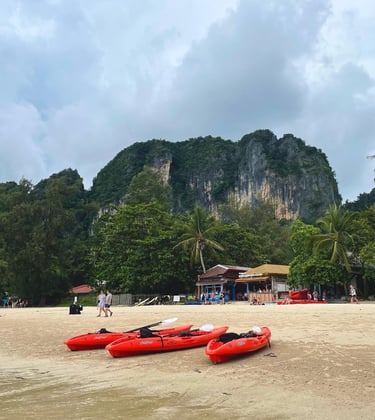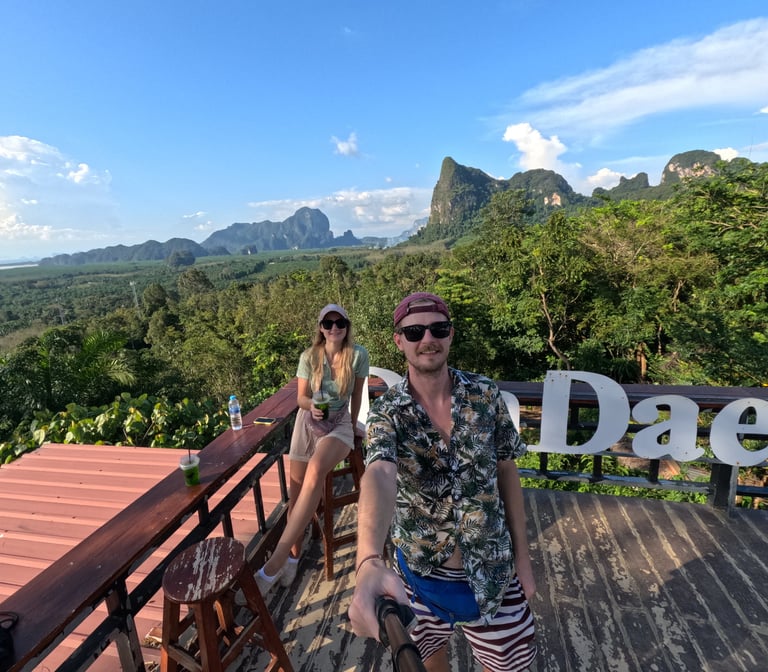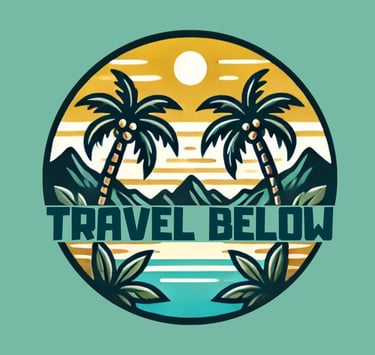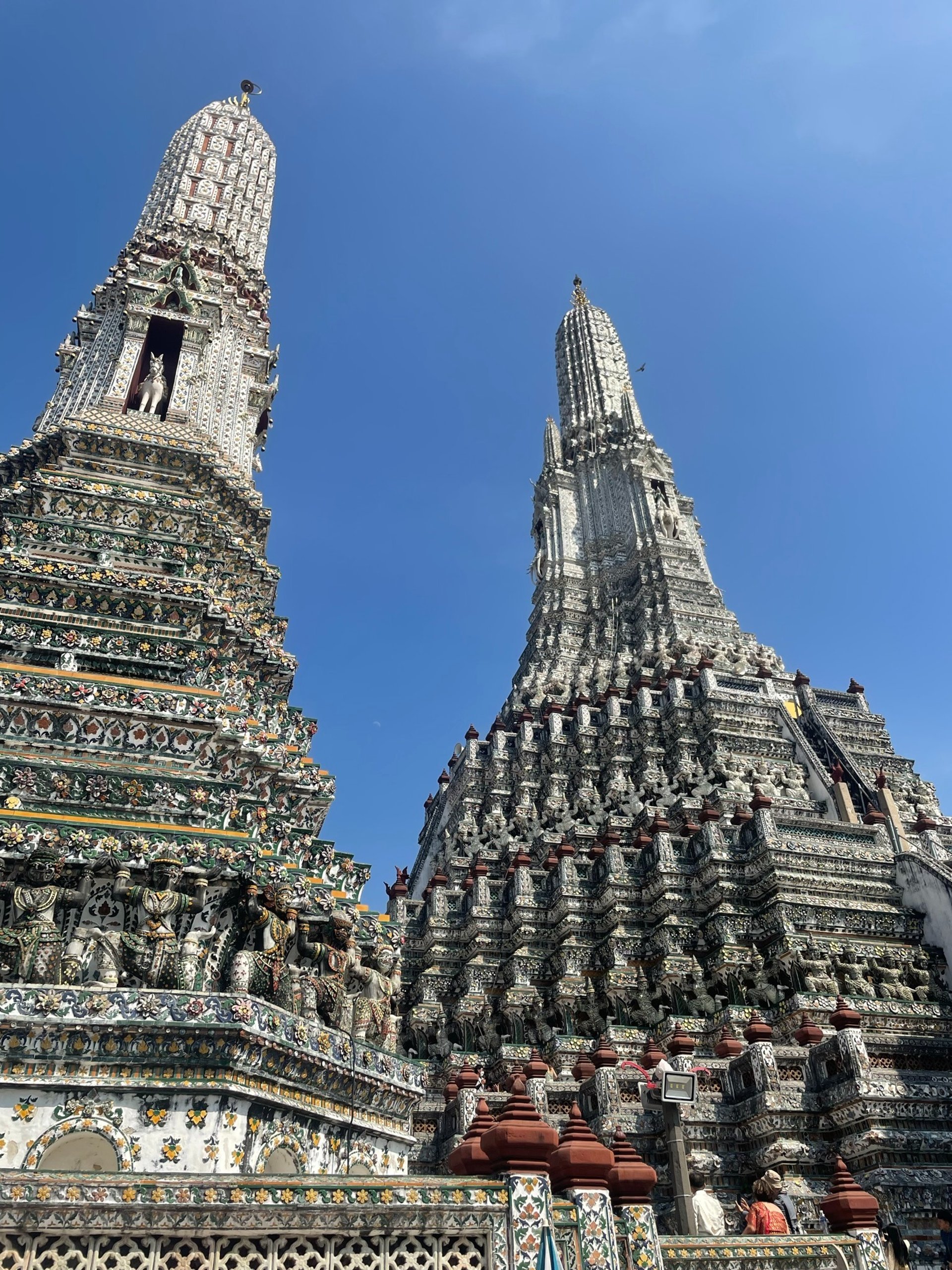
City of Angels… that never sleeps
B A N G K O K
Table of contents
Is Bangkok worth visiting?
The name of Bangkok and the Guinness World Record
Landing in Bangkok - what’s next?
Getting from the Airport to the city center
Your first time in Bangkok
What to see in Bangkok? MUST SEE
The Grand Palace
Online tours
I also invite you to check out my general guide to Thailand!
You’ll find useful info about the country, visas, the best time to visit, SIM cards, and much more! I’ll be adding new content regularly, so feel free to stop by again soon :)
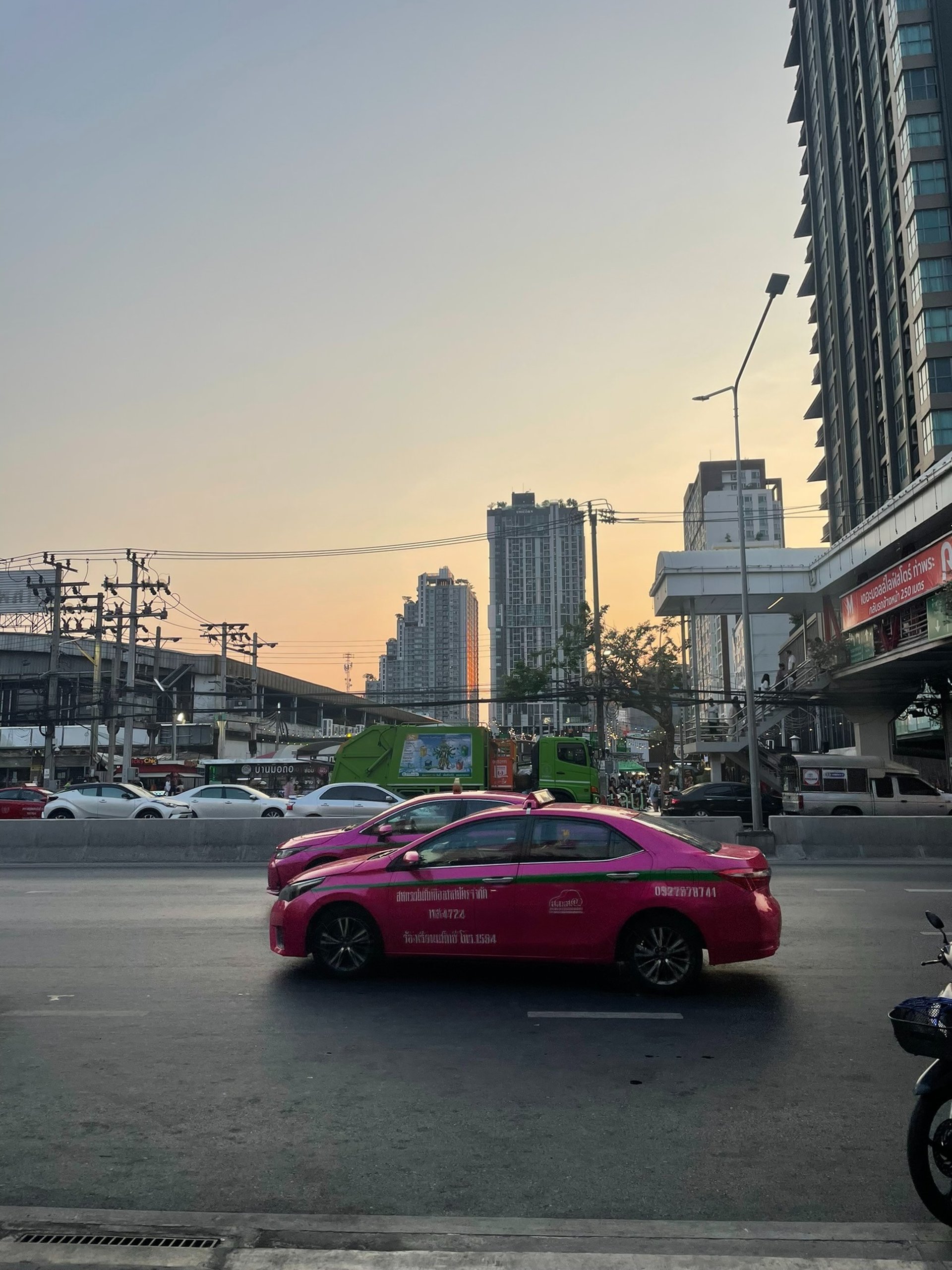
The question might sound rhetorical, but honestly - everyone planning their first trip to Thailand, especially a short one, ends up wondering the same thing. Is it worth staying here for a few days? What’s there to do besides partying, temple hopping, and skyscraper sightseeing? Wouldn’t it be better to just head straight to the islands? How much time should you actually spend in the capital? Some say “get out of Bangkok as fast as you can - two or three days is plenty”, while others insist that “a month isn’t enough”. As usual, I’ll try to answer this question in my own way - with a twist - but also thoroughly, keeping in mind all kinds of travelers.
Is Bangkok worth visiting?
Bangkok is the capital of the Kingdom of Thailand and usually the first place you’ll land when visiting the Land of Smiles. I kept postponing writing this post, thinking there was no need - after all, the internet is overflowing with blogs and vlogs about Bangkok. But I still get tons of questions about the city, mostly because you keep coming across completely opposite opinions - and many travelers simply don’t know how to fit Bangkok into their itinerary. “To visit Thailand and skip Bangkok”? When you travel independently, you have every right to go where you want - not where everyone else goes. And that’s the beauty of traveling on your own terms. You don’t have to do anything ;)
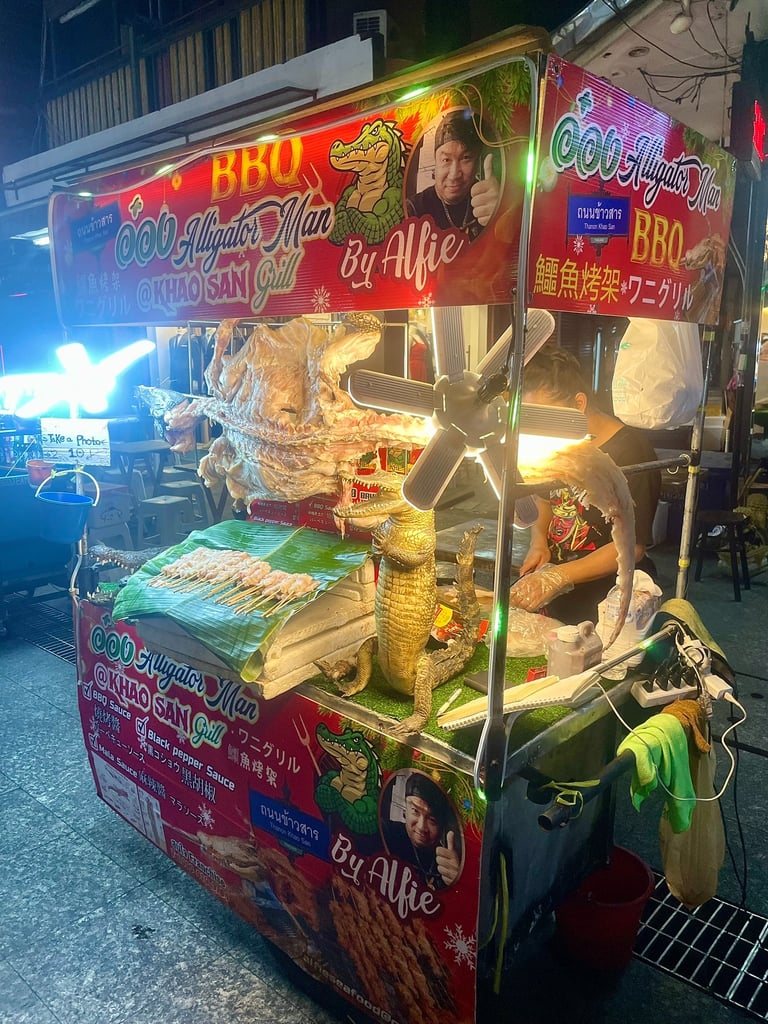


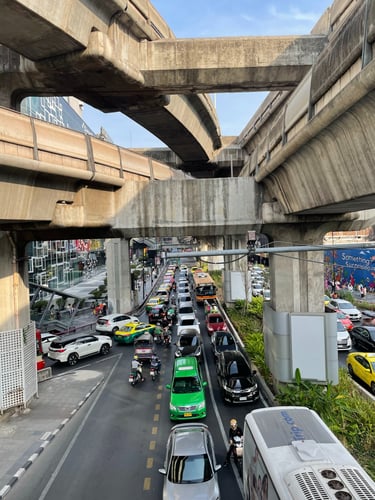
A few words about Bangkok – how big is it really?
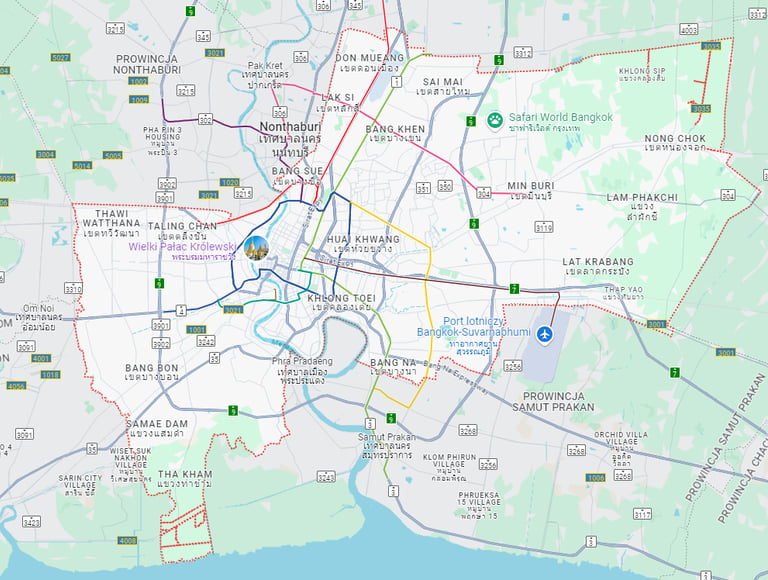

Bangkok is… a huge city — really, really huge. To help you picture just how big, here are a few numbers:
The population of Bangkok is over 5.6 million, and the entire metropolitan area counts around 15 million people - not including tourists. In 2023, more than 22 million visitors came to Bangkok (according to the official tourism board). Just in December 2023, about 2.3 million international tourists landed here (statista.com).
The area of Bangkok is 1,568.7 km² (Wikipedia).
For comparison: Warsaw covers 517.2 km², with fewer than 2 million residents. The whole Warsaw metropolitan area (20 cities) has between 2.6 and 3.5 million inhabitants (Wikipedia).
So, can you picture how big Bangkok really is?
If you’ve been to London, that’s a good comparison - they’re about the same size in terms of area.
You might be thinking: “Why do I need to know all this? We just want to see Chinatown, visit a few temples, and grab a drink at a Sky Bar”. Trust me - it’s worth knowing, because in a city as huge as Bangkok, the map can be deceiving. Distances here are massive. You can’t just glance at a map - you have to zoom in properly. Even though we’ve been to Bangkok many times, we still often misjudge how far something actually is… once we’re already there. For example: you book a hotel, check what’s “nearby”, and it all looks great - until you realize that your “close attraction” is several kilometers away, and getting there requires switching to a different metro line. This is especially important if you want to stay near a night market, a shop, or a specific attraction - and you’ve got limited time in the capital. “Walking distance” in Bangkok can mean something very different than you expect. And by the way - Bangkok isn’t exactly made for long, leisurely walks… but more on that later.

FUN FACT
Did you know that Bangkok’s full Thai name is the longest city name in the world — and it’s even listed in the Guinness World Records? Well, now you do. The full name is: Krung Thep Mahanakhon Amon Rattanakosin Mahinthara Ayuthaya Mahadilok Phop Noppharat Ratchathani Burirom Udomratchaniwet Mahasathan Amon Piman Awatan Sathit Sakkathattiya Witsanukam Prasit, which roughly translates to: “City of angels, great city, residence of the Emerald Buddha, invincible city of God Indra, great capital of the world, adorned with nine precious gems, full of royal palaces, equal to the heavenly abode of the reincarnated god, a city bestowed by Indra and built by Vishvakarman”.
Thai children learn this name in school - just like we used to memorize epic poems - but locals simply call the city Krung Thep, so it’s worth remembering that name.
If you’re flying to Bangkok from Europe, you’ll most likely land at Suvarnabhumi Airport (BKK) – one of the largest airports in the world. Keep that in mind when flying out of Thailand too - it’s best to arrive at least 2.5–3 hours before your flight to avoid stress at check-in and security lines. Upon arrival, you’ll go through immigration control, which can take a while, as fingerprints and photos are taken for all visitors. Once you get your passport stamped, collect your luggage (if you have checked bags) and exit the terminal through one of the many gates. Bangkok actually has two international airports: Suvarnabhumi (BKK) and Don Mueang (DMK). The latter is smaller but still quite busy and is located closer to the city center. The airports are over 40 km apart, so if you’re planning to continue your journey elsewhere in Thailand or Asia on the same day, double-check which airport your next flight departs from. Personally, I always recommend spending at least one night in Bangkok after landing. It gives you a buffer in case of flight delays and helps you start your trip without unnecessary stress.
Landing in Bangkok - what’s next?
There are several ways to get from Suvarnabhumi Airport (BKK) to central Bangkok. While the most convenient option is, of course, to pre-book a private transfer, we actually recommend taking the Airport Rail Link. Bangkok is one of the most traffic-congested cities in the world, and traveling by car or bus can take a long time. On our very first visit, we took a taxi with big suitcases - it took us over two hours to reach the hotel. We never made that mistake again! That said, here are all the main options for getting from the airport to the city:
Public taxi - the public taxi stand is located on the ground floor (Level 1) - one level below the arrivals hall - near exits 3, 4, 7, and 8. Follow the Public Taxi signs and ignore any touts offering rides inside the terminal. You’ll need to take a ticket from an automated kiosk and proceed to the bay number shown on your ticket. Staff are available to assist if needed. The fare is metered and includes: +50 THB airport surcharge, +25–70 THB for expressway tolls (paid directly to the driver). Expect to pay around 400–600 THB (approx. 50–70 PLN) for a one-way trip to downtown Bangkok.
Private transfer - a pre-booked driver will meet you in the arrivals hall holding a sign with your name and take you directly to your hotel. It’s the easiest and most comfortable option, but not the cheapest - around 90–100 PLN for 2–3 people. You can reserve one online in advance (see links below).
Bangkok Airport Rail Link - this suburban train is the fastest and cheapest way to get into the city. It connects Suvarnabhumi Airport with Phaya Thai (BTS) via Makkasan (MRT) - a key transfer point to Bangkok’s subway system (Blue Line). From the arrivals hall, follow the signs down to Level B (below Level 1). Tickets cost: 45 THB to Phaya Thai (BTS), 35 THB to Makkasan (MRT). The ride takes about 25–30 minutes, and trains run every 10-15 minutes.
Public bus - there are city buses that run between the airport and central Bangkok. They’re cheap (around 35 THB per person), but the train is much faster and more comfortable.
Free shuttle bus between airports - a free shuttle bus operates between Suvarnabhumi (BKK) and Don Mueang (DMK) airports. It departs from the 2nd floor of Suvarnabhumi Airport (Arrivals Hall), near Gate 3. The white, air-conditioned bus has space for luggage. No reservation is required - it’s first come, first served. The bus runs daily from 05:00 to midnight, every 15–30 minutes depending on the time of day. The trip takes 50–60 minutes, but can take longer during rush hour or heavy rain. To use the free shuttle, you must show your passport and a flight ticket or itinerary for a same-day or next-day departure.
If you’re transferring the other way - from Don Mueang (DMK) to Suvarnabhumi (BKK): The shuttle departs from Terminal 1, Level 1, Gate 6 at DMK. Look for the “Shuttle Bus” signs inside the terminal - the stop is located inside the building, on the right side of Exit 6. At Suvarnabhumi, the shuttle drops passengers off on the 4th floor (Departure Hall), near Gate 5. If you have a short connection between the two airports, you might want to book a Fast Track Immigration Service at BKK to speed up the arrival process and avoid long queues.
You can also book a transfer online - whether between airports or directly to your hotel - using the links below:
Getting from the Airport to the city center
What comes to mind when you think of Bangkok? Probably vibrant temples, golden statues, and skyscrapers stretching to the horizon. Maybe it’s sipping cocktails with a skyline view from one of the city’s sky bars, like the famous Lebua at State Tower (yes, the one from The Hangover). You can almost hear the honking scooters, see the racing tuk-tuks, and the colorful taxis stuck in endless traffic jams. Then there are the street markets - endless rows of stalls overflowing with street food: exotic fruits, grilled octopus, scorpions on sticks, and sizzling woks filled to the brim with Pad Thai. Some might picture the darker side of the city - narrow alleys lit by flickering lamps, scantily dressed women offering “special” massages, or bar promoters waving cardboard signs shouting “buy 2, get 1 free”. Others see the floating markets, wooden houses on stilts, the poverty, begging children, and scurrying cockroaches and rats. Let me tell you this - whatever image of Bangkok you have in mind, whatever version of Bangkok you’re looking for… you’ll find it here.
Your first time in Bangkok

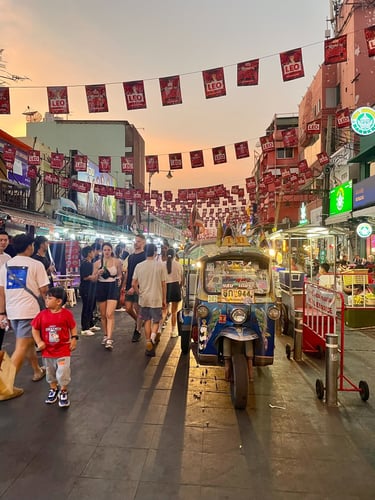


There are a few things you should know before your first time in Bangkok - besides choosing your accommodation wisely, because this city is huge. After nearly a full day of travel - whether smooth or exhausting - the first thing that greets you when you step out of the terminal is a blast of hot air. Bangkok is always hot, no matter the season.
Even though there are parks, green corners, and leafy suburbs, the city center is, simply put, concrete jungle. If you’re coming from Europe during the winter, trust me - your body will need time to adjust. The combination of heat, time zone change, and jet lag usually means your first day will be a slow one - or even completely lost to recovery. The faster you adapt to the local rhythm, the faster you’ll shake off the fatigue and start fully enjoying your trip.
If you arrive in the morning, it’s best to push through the day: wander around without a strict plan, do some sightseeing, grab a meal, maybe take a swim, go shopping, and head to bed early to reset your body clock. If you land in the evening, skip the late-night adventures - take a short walk, have dinner nearby, and go to bed at a reasonable local hour to sync up with Thai time as quickly as possible.
Now, back to the heat - it’s real (below you’ll find a few photos from central Bangkok to help you imagine what a few kilometers of walking in this heat actually look like). Along the way, there’s hardly any shade, so plan your day with breaks in mind - to sit under a tree, pop into an air-conditioned shop, or grab a cold drink. Walking in Bangkok is not as easy as it seems.
The good news? The city is very well connected - with a fast and efficient metro, skytrain lines, and river transport that easily avoids traffic. On top of that, there’s Grab (Asia’s version of Uber), which you can order with just a few taps. Of course, some travelers will tell you Bolt or InDrive work better - and sure, you can try them too. But in our experience, Grab has never let us down.
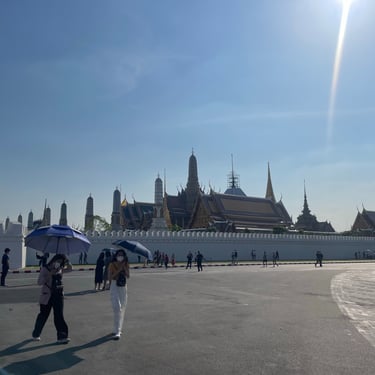



What to see in Bangkok? MUST SEE
As you probably already know, Bangkok is huge - and it offers so much more than just temples, sky bars, or shopping malls. It’s a fascinating capital that you could explore endlessly, discovering new layers every time you visit. Below, I’ve listed some of the most important places to visit during your first trip - a great starting point to get a real feel for the city. And don’t worry - I’ll prepare a separate list of the best Sky Bars in Bangkok for you soon!
The Grand Palace
The Grand Palace is one of Bangkok’s most iconic landmarks - a place of deep historical and spiritual significance. Built in 1782, it served as the official residence of Thai kings for over 150 years and remains a powerful symbol of national identity and pride.
What to see inside the Grand Palace complex
Wat Phra Kaew (Temple of the Emerald Buddha) - home to Thailand’s most revered statue, the Emerald Buddha, which is surprisingly small - only 66 centimeters tall. Three times a year, the statue’s robes are ceremonially changed by the King himself, as he is the only person allowed to touch it. Photography inside the temple is strictly prohibited. Keep in mind that only a few palace buildings are open to visitors, and this site attracts not just tourists but also devout Buddhists who come to worship.
The Throne Hall - used for important royal and state ceremonies.
The Grand Palace Museum - showcases artifacts and historical documents that trace Thailand’s royal and cultural heritage.
Opening hours: daily: 8:30 AM – 3:30 PM
Entrance fee: 500 THB per person

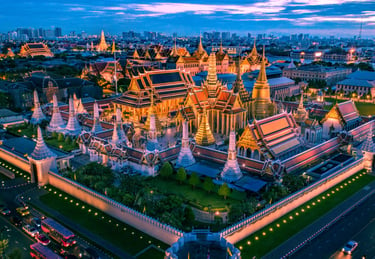


Wat Arun - The Temple of Dawn
Wat Arun is one of Bangkok’s most iconic and photogenic temples - and personally, one of my favorites. Located on the western bank of the Chao Phraya River, the temple is instantly recognizable by its central prang (tower), beautifully decorated with thousands of pieces of colorful porcelain that form an intricate mosaic. Wat Arun is breathtaking at any time of day, but it’s especially stunning at dusk, when its illuminated façade reflects off the river’s surface, creating one of the most memorable sights in Bangkok.
Opening hours: daily: 8:00 AM – 6:00 P
Entrance Fee: 100 THB per person
Godziny otwarcia: Codziennie od 8:00 do 18:00.
Wstęp: 100 THB/osoba.


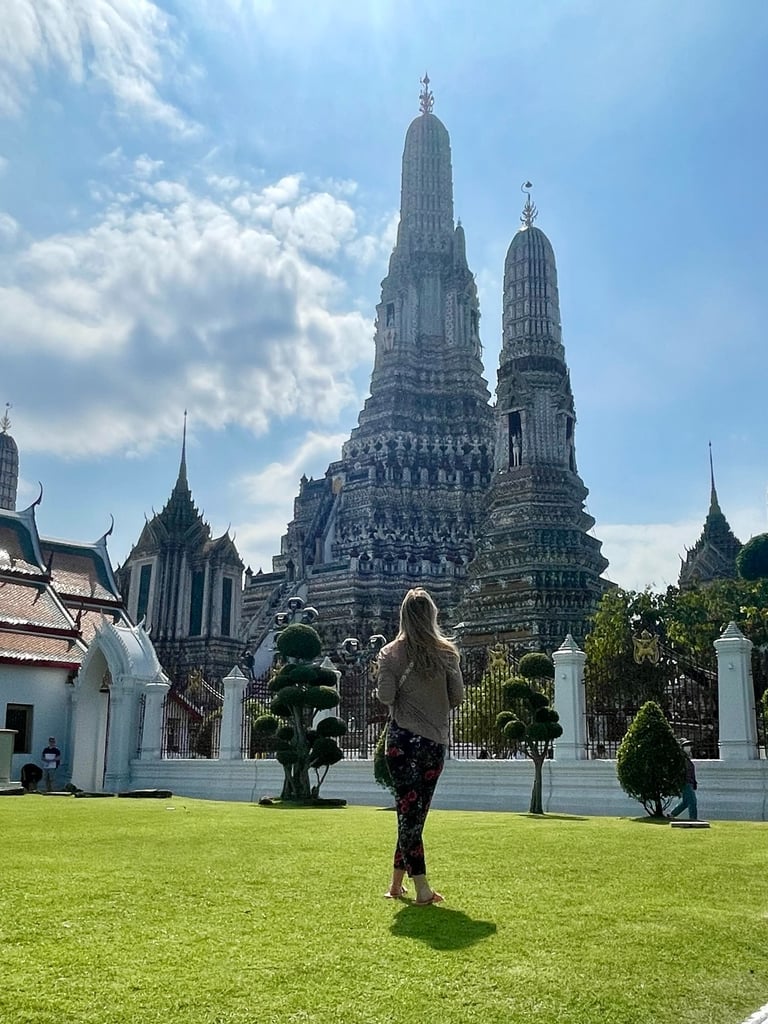

Wat Pho - The Temple of the Reclining Buddha
Wat Pho is the oldest and largest temple in Bangkok, best known for its giant Reclining Buddha statue - an awe-inspiring figure measuring 46 meters long and 15 meters high, symbolizing the Buddha entering nirvana. The temple’s history stretches back to before Bangkok became Thailand’s capital, and it was extensively restored and expanded by King Rama I in the late 18th century, who turned it into a center of spiritual and educational life. Later, under King Rama III, Wat Pho became Thailand’s first public education center, preserving knowledge in fields such as medicine, astronomy, and literature.
Its cultural and historical significance has been recognized by UNESCO, which included the temple in its Memory of the World register for safeguarding ancient inscriptions and manuscripts.
Wat Pho is also home to Thailand’s first traditional massage school, founded in 1955. To this day, it remains one of the world’s most respected centers for learning Thai massage, offering a range of courses - from beginner techniques to advanced methods in reflexology and acupressure.
Interesting facts
Wat Pho houses over 1,000 Buddha images, more than any other temple in Thailand.
UNESCO recognized its role in preserving traditional Thai medical knowledge, calling it a “living museum”.
The temple hosts annual ceremonies and cultural events that attract both locals and tourists.
Inside, you’ll find ancient human body charts depicting energy lines used in traditional Thai massage.
Opening hours: Daily: 8:00 AM – 6:30 PM
Entrance fee: 300 THB per person
Massage services: You can enjoy an authentic Thai massage performed by trained therapists on-site. Prices range from 260 to 400 THB per hour, depending on the type of massage.


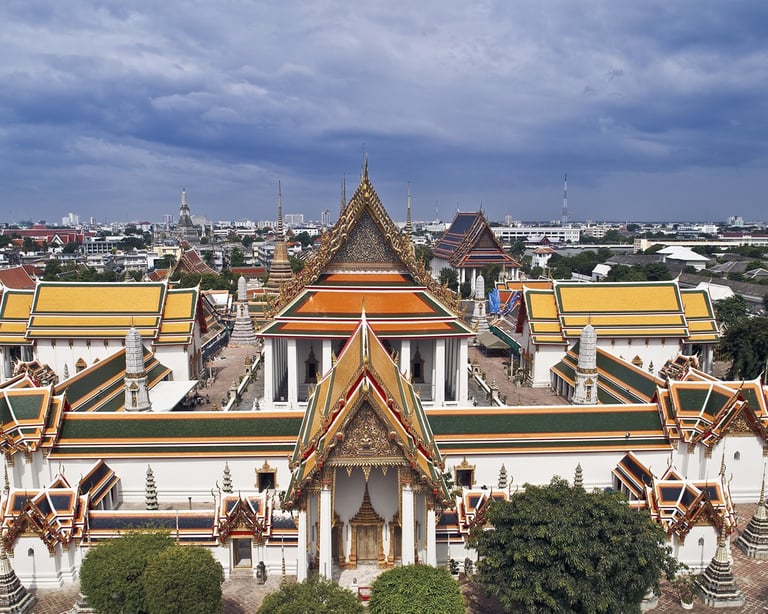

China Town
Bangkok’s Chinatown is one of the oldest and most vibrant districts in the city - a sensory overload of narrow alleys, colorful shop signs, sizzling woks, and the constant buzz of street life. Founded in the late 18th century by Chinese merchants, it remains one of the most authentic and atmospheric parts of Bangkok. Here, every corner bursts with life - the aroma of dim sum, wontons, roasted duck, grilled seafood, and exotic fruits fills the air, often mixed with a hint of street-side chaos: honking horns, bright neon lights, and crowds moving in every direction.
What to see in Chinatown?
Yaowarat Road – the main artery of Chinatown, lined with restaurants, street food stalls, and gold and jewelry shops.
Wat Traimit (Temple of the Golden Buddha) – home to the world’s largest solid gold Buddha statue, weighing an incredible 5.5 tons.
Sampeng Market – a maze of narrow lanes where you can find everything from spices and fabrics to souvenirs and gadgets.
Chinatown is worth exploring both during the day and after dark. In daylight, you’ll see the traditional markets and temples at their liveliest. But at night, the district truly comes alive - neon signs light up the streets, food stalls open in every direction, and the smell of sizzling dishes fills the air. If you want to experience Bangkok’s street culture, taste unforgettable food, and dive headfirst into a whirlwind of colors, sounds, and flavors - Chinatown is a must.
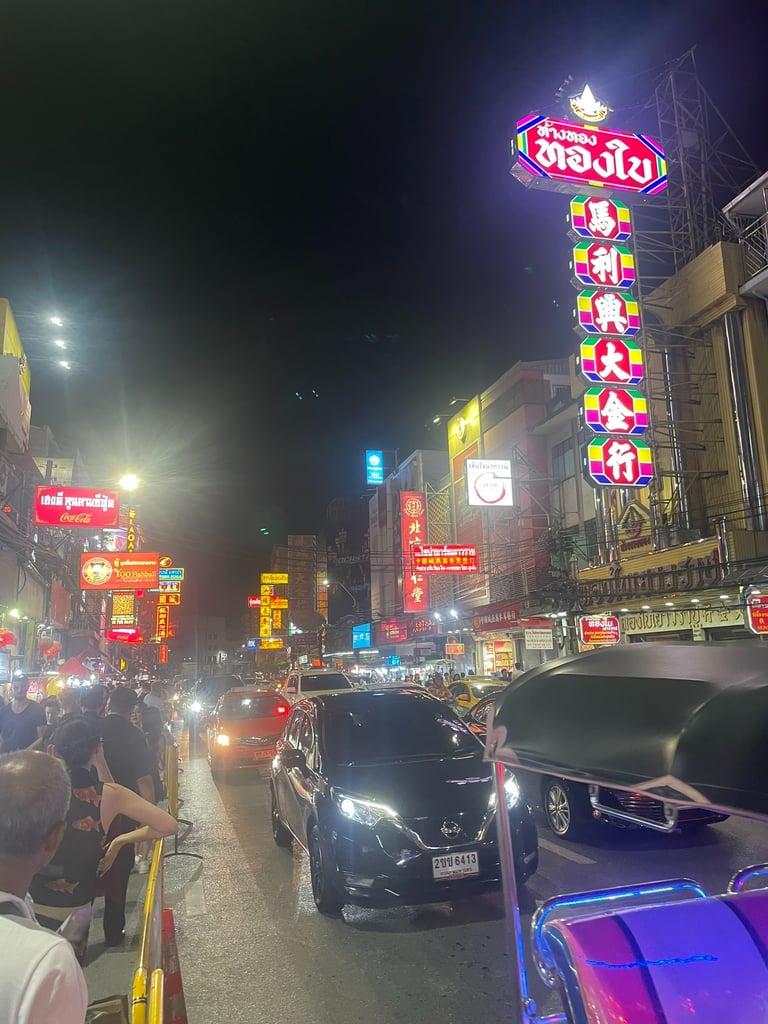

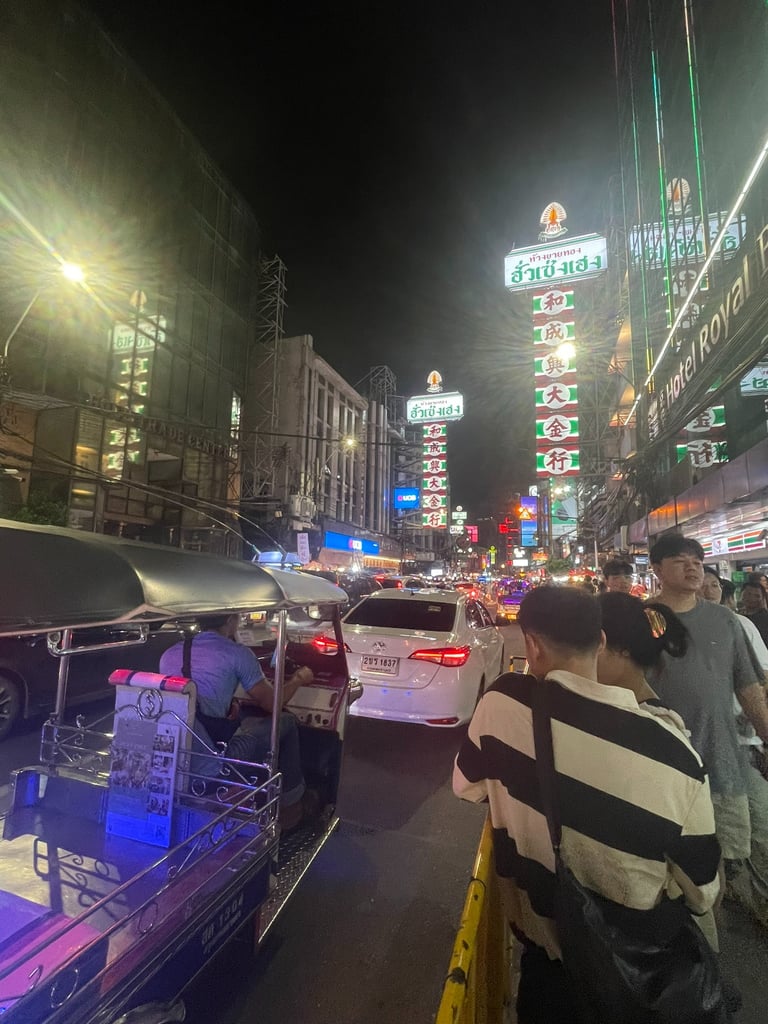

If you find our content helpful, you can say thanks with a small coffee - or simply share it on your social media.
We’d also love it if you followed us on Instagram and Facebook. We do our best to share the most up-to-date stories and insights - not just from Thailand, but from other countries we visit too.
And if you need help planning your own trip to Thailand, just drop us a message - we’ll be happy to help! 😊
If you’re looking for organized tours in Bangkok, feel free to check out our GetYourGuide link.
By booking through it, you’ll be supporting our future travels - at no extra cost to you.
Drop as a line
Thinking about traveling to Thailand? Need help planning your trip, a few local tips, or just want to chat about your travel ideas?
Feel free to get in touch.
